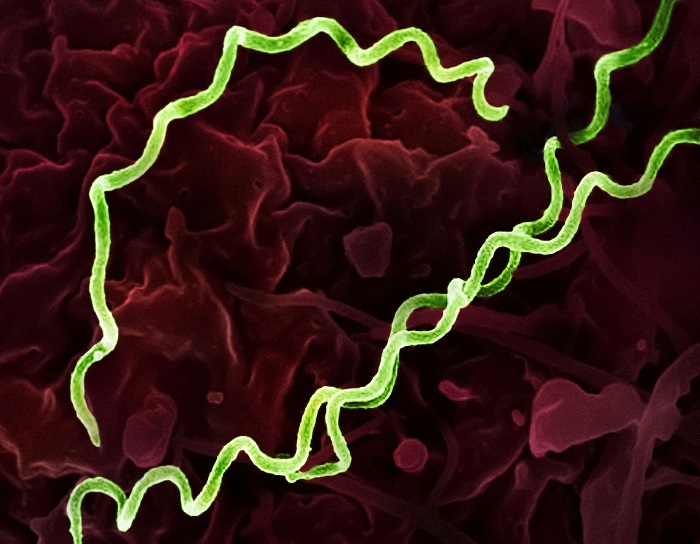In the ever-evolving landscape of medical research, a groundbreaking development has emerged – a revolutionary molecule that holds the potential to combat the viruses responsible for shingles and chickenpox. These viruses, known as herpes zoster virus (HZV) and varicella-zoster virus (VZV), have long posed challenges to global healthcare systems. The advent of this innovative molecule has ignited hope among researchers, medical professionals, and individuals affected by these viral infections. In this comprehensive exploration, we delve into the intricacies of this groundbreaking discovery, shedding light on its implications for the future of antiviral treatments.
Understanding the Herpes Zoster Virus and Varicella-Zoster Virus
Before delving into the revolutionary molecule, it’s essential to understand the viruses it aims to combat. The herpes zoster virus (HZV), commonly known as the shingles virus, and the varicella-zoster virus (VZV), responsible for chickenpox, belong to the herpes virus family. While chickenpox primarily affects individuals during childhood, the virus can lie dormant within the body’s nerve cells and resurface later in life as shingles. This reactivation often results in painful rashes, nerve pain, and debilitating symptoms.
Shingles, in particular, pose a significant public health challenge, with an estimated one in three individuals developing the condition at some point. The pain and discomfort associated with shingles can significantly impact the quality of life for affected individuals, particularly older adults and those with compromised immune systems. Similarly, the contagious nature of chickenpox emphasizes the need for effective treatment and prevention strategies.
Read more: Equine Herpes Outbreak Confirmed in Gem County, Idaho Horse
The Quest for Effective Antiviral Treatments
Medical researchers and pharmaceutical companies have relentlessly pursued developing effective antiviral treatments against HZV and VZV for decades. Existing medications, such as antiviral drugs, have offered some relief by reducing symptoms and suppressing the viruses’ activity. However, the emergence of drug-resistant strains and the persistence of post-shingles pain, known as postherpetic neuralgia, have highlighted the limitations of current treatments.
This backdrop of challenges underscores the significance of the recent breakthrough – a revolutionary molecule that takes a novel approach to targeting these persistent viral adversaries.
Unveiling the Revolutionary Molecule
The discovery of the revolutionary molecule represents a watershed moment in the realm of antiviral research. Developed through meticulous laboratory work and rigorous testing, this molecule demonstrates a unique mechanism of action that sets it apart from existing treatments. Unlike conventional antiviral drugs that primarily inhibit viral replication, this molecule targets specific viral proteins essential for the viruses’ survival and propagation.
The molecule’s targeted approach shows promise in effectively reducing viral load and offers the potential to mitigate the development of drug-resistant strains. This aspect marks a significant stride in the fight against HZV and VZV, potentially reshaping the landscape of antiviral therapies.
Mechanism of Action: Disrupting Viral Proteins
Central to the revolutionary molecule’s mechanism of action is its ability to disrupt crucial viral proteins required for viral replication and dissemination. The molecule effectively hinders the viruses’ ability to spread and cause further damage by pinpointing these proteins and interfering with their functioning. This precise targeting minimizes the risk of collateral damage to healthy cells and reduces the likelihood of adverse side effects commonly associated with traditional antiviral medications.
The Promise of Reduced Drug Resistance
One of the revolutionary molecule’s most promising aspects is its potential to mitigate the development of drug-resistant strains of HZV and VZV. Traditional antiviral drugs often face the challenge of viral mutations that render them less effective over time. This phenomenon underscores the need for constant innovation to stay ahead of viruses’ evolving strategies.
The molecule’s unique mode of action, which targets essential viral proteins, creates a formidable barrier against drug resistance. By focusing on aspects crucial for the viruses’ survival, the molecule minimizes the likelihood of mutations that can confer resistance. This factor enhances the molecule’s efficacy and offers hope in the battle against the viruses’ adaptive mechanisms.
Clinical Trials and Future Prospects
The path from laboratory discovery to clinical application is pivotal in developing any medical breakthrough. As the revolutionary molecule progresses through clinical trials, researchers carefully evaluate its safety, efficacy, and potential side effects in human subjects. Preliminary results have been promising, demonstrating a notable reduction in viral activity and improving patients’ symptoms.
Should the molecule’s clinical trials yield positive outcomes, it can revolutionize the treatment landscape for shingles and chickenpox. The molecule’s targeted approach, coupled with its potential to address drug resistance, positions it as a frontrunner in the quest for effective antiviral therapies.
A Glimpse into the Future
The advent of the revolutionary molecule not only holds the promise of improved treatment for individuals affected by shingles and chickenpox but also underscores the broader potential of innovative approaches in medical research. The molecule’s targeted strategy paves the way for a new era of antiviral treatments, prioritizing efficacy, reduced drug resistance, and patient well-being.
Furthermore, the discovery serves as a reminder of the power of human ingenuity and scientific collaboration in addressing some of our time’s most pressing health challenges. As medical researchers continue to unravel the complexities of viral infections, breakthroughs like the revolutionary molecule illuminate the path toward a future where the viruses that cause shingles and chickenpox are no longer impossible adversaries.
Conclusion: Illuminating a Path Forward
The revolutionary molecule’s potential to combat the herpes-zoster virus and varicella-zoster virus shines a light on the intersection of scientific innovation and human well-being. By targeting crucial viral proteins and offering a novel approach to treatment, this discovery represents a triumph in the ongoing battle against viral infections.
As clinical trials progress and researchers delve deeper into the molecule’s mechanisms, the potential for a paradigm shift in antiviral therapies becomes increasingly tangible. With its promise to reduce drug resistance and enhance patient outcomes, the molecule could pave the way for a future where the burden of pain and discomfort no longer accompanies shingles and chickenpox.
In a world where medical breakthroughs continually shape the contours of healthcare, the revolutionary molecule serves as a beacon of hope, reminding us that science’s capacity to transform lives knows no bounds. As the journey from discovery to application unfolds, it propels us toward a horizon where the viruses that have plagued us for so long are confronted with ingenuity, determination, and the relentless pursuit of a healthier future.
Reference: New molecule could treat virus that causes shingles, chickenpox




